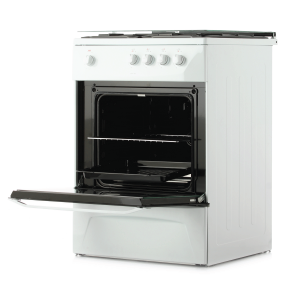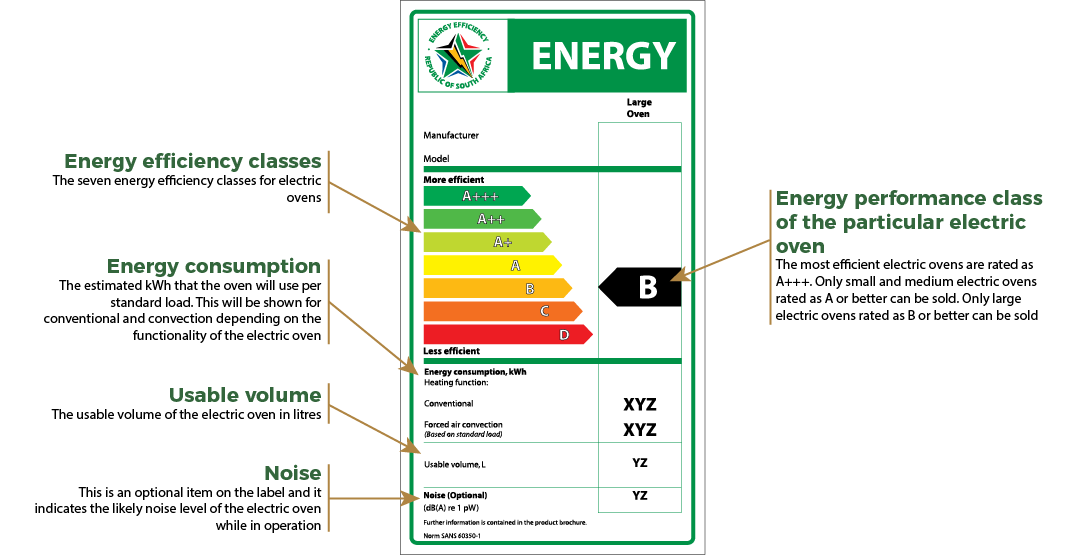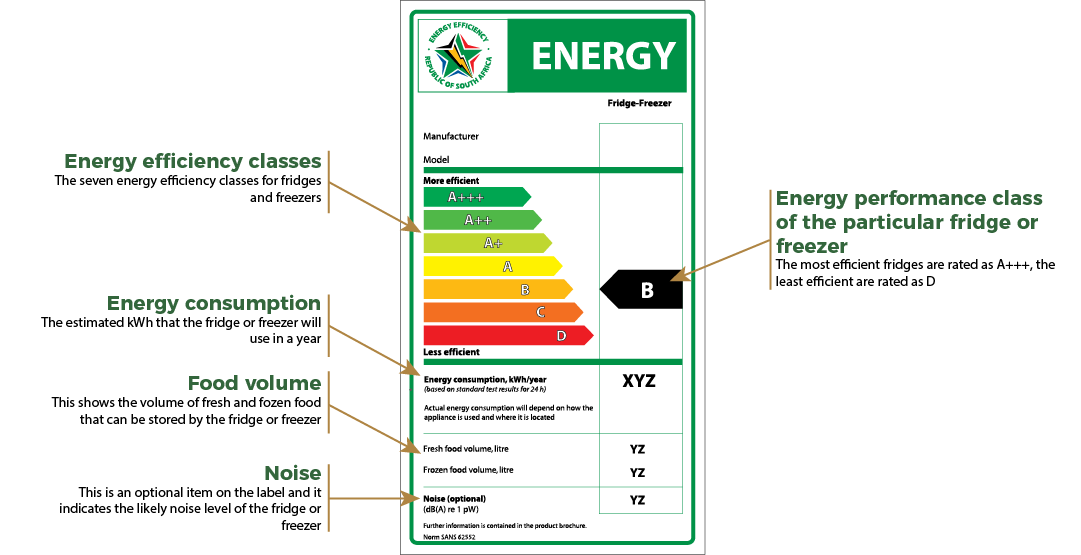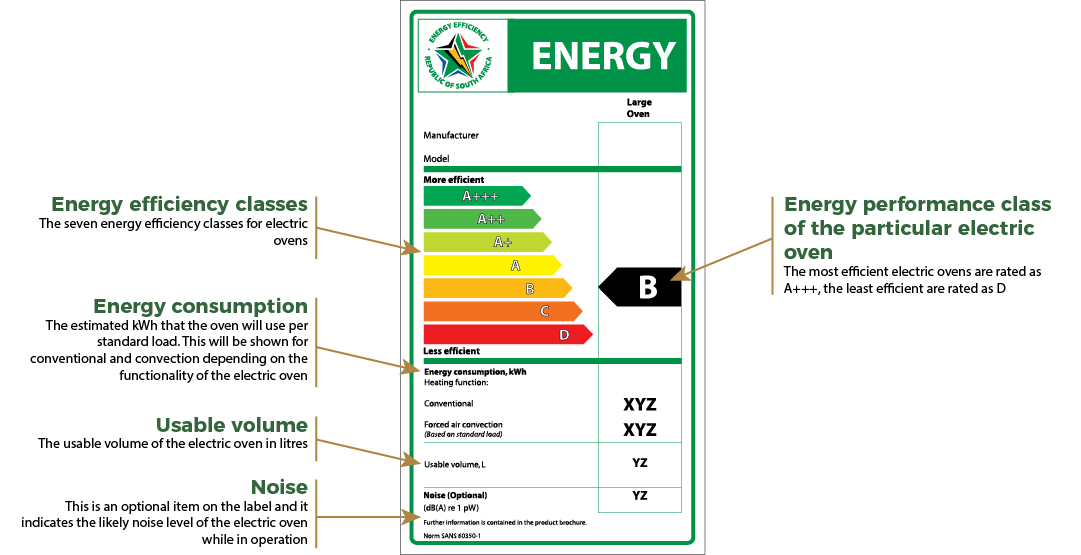Electric Ovens
Electric ovens that are used regularly can be significant consumers of energy in households. Consumers who make regular use of their ovens should carefully consider their choice of oven before making a decision to purchase.
To protect consumers from purchasing inefficient electric ovens, Minimum Energy Performance Standards (MEPS) have been set for electric ovens. Currently, only large electric ovens with an Energy Efficiency Rating of Class B or better can be sold. With regards to small/medium electric ovens, an Energy Efficiency Rating of Class A or better can be sold.
The larger an electric oven, the more energy required to heat the oven space. As a result, the most important decision to be made when purchasing an electric oven from an energy efficiency perspective is what size oven to purchase. Ideally, consumers should purchase the smallest oven that meets their baking and roasting needs.

Understanding the energy efficiency label
Electric ovens being sold must be labelled with a South African Energy Efficiency Label to help consumers understand the relative energy efficiency of different electric ovens. The image below shows a sample of a label for an electric oven with an explanation of the key elements of the label.

Calculating how much the appliance will cost to run
The kWh figure for energy consumption that is shown on the label is designed to assist you to calculate how much a single standard use of an oven would cost. However, it should be noted that most consumers use electric ovens very differently and a single use for one consumer may be very different for a single use for another consumer.
To calculate a likely estimate of the annual running costs of an electric oven, multiply the kWh figure given on the label by the number of times you are likely to use the oven in a single week. Next, multiply by 52 weeks. Finally, multiply by the cost of electricity in your municipality. You can find the kWh cost of electricity in your municipality by looking at your electricity bill.
For example, if the label indicates that the electric oven will use 2 kW per hour and where you live a kWh of electricity costs R2 (including VAT), the cost of running the electric oven that you use for 4 hours a week will be R832 for the year. Appliance Energy Calculation Tools were created to aid consumers to make more informed decisions by calculating the long term cost for running an appliance. Click here to calculate the running costs and CO2 emissions for electric ovens.
{Energy Consumption Per Hour}
x {Number of hours used per week}
x {Number of weeks in a year}
x {Cost of Electricity in your municipality}
= Annual running cost of the appliance
2 kWh X 4 hours per week X 52 weeks in year X R2 per kWh = R832
Tips for using your appliance most efficiently
 Keep oven doors closed
Keep oven doors closed
Every time the oven door is opened, the temperature drops and the over needs to work harder to heat up again. Ensure that oven doors are closed while cooking.
 Cook several dishes once
Cook several dishes once
Cooking several dishes in the oven simultaneously uses the same energy as cooking a single dish.
 Switch off the oven on the plug
Switch off the oven on the plug
When the oven is not switched off the plug, it continues to use electricity to power up the clock. Make certain that the oven is switched off on the plug when it is not in use.
 Defrost food
Defrost food
Defrosting food before cooking will reduce the cooking time significantly. Defrost food in advance.










